15mm Early Bronze Age North Europe
Posted: Mon Aug 22, 2022 11:17 pm
Early Bronze Age North Europe
2000-1200 B.C.
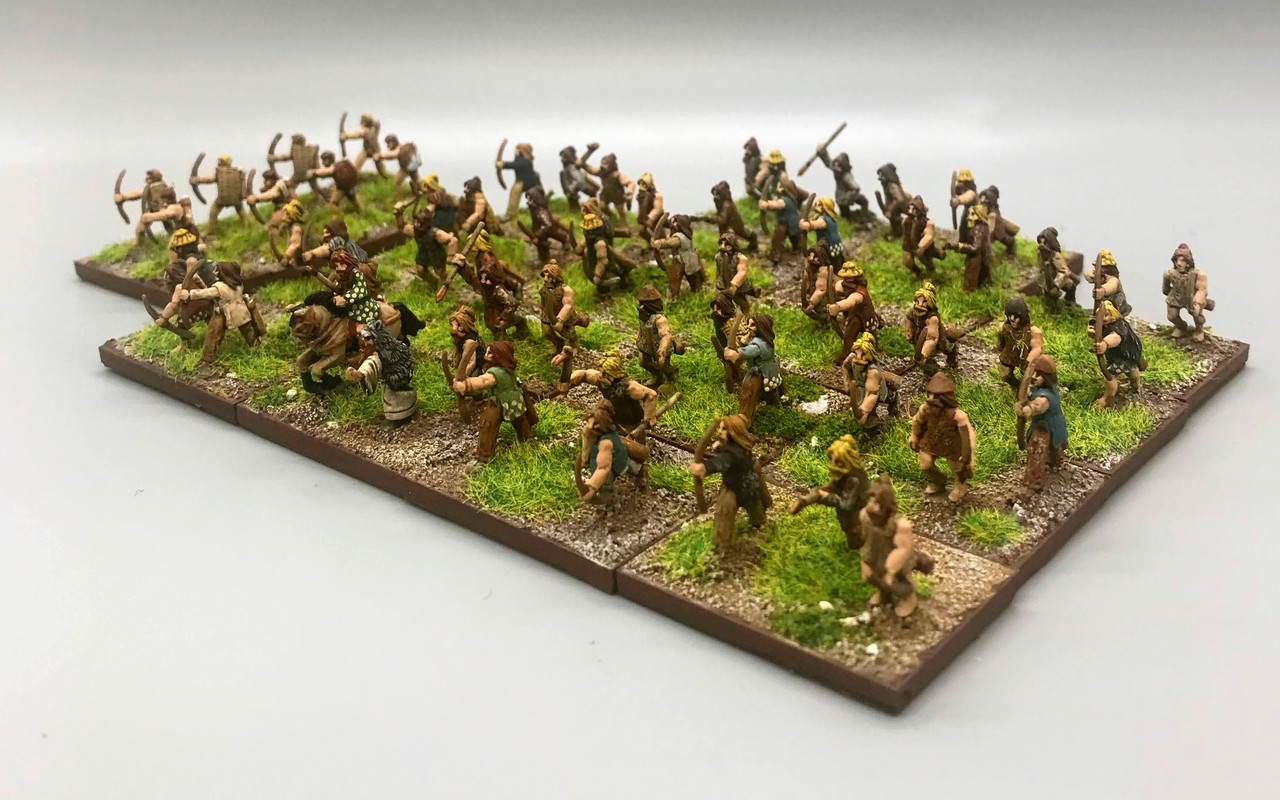
This army is based on the very limited knowledge we have of the military forces of the Bell Beaker culture in Britain, which lasted there until about 1800 B.C. We do know that they had bows and copper or bronze daggers for weapons based on grave finds, the best known of which is the Amesbury Archer who was discovered close to Stonehenge.
This army list has exactly two opponents listed: other Early Bronze Age North Europe and Urnfield Culture.
There is no information (that I could find) on their tactics or organization, so in Triumph! terms they are classified as Bow Levy, with options for some skirmishers and/or horde elements.
This army consists of:
18 x Bow Levy, including the general
4 x Skirmishers
For a total of 22 stands worth 48 points.
Bow Levy

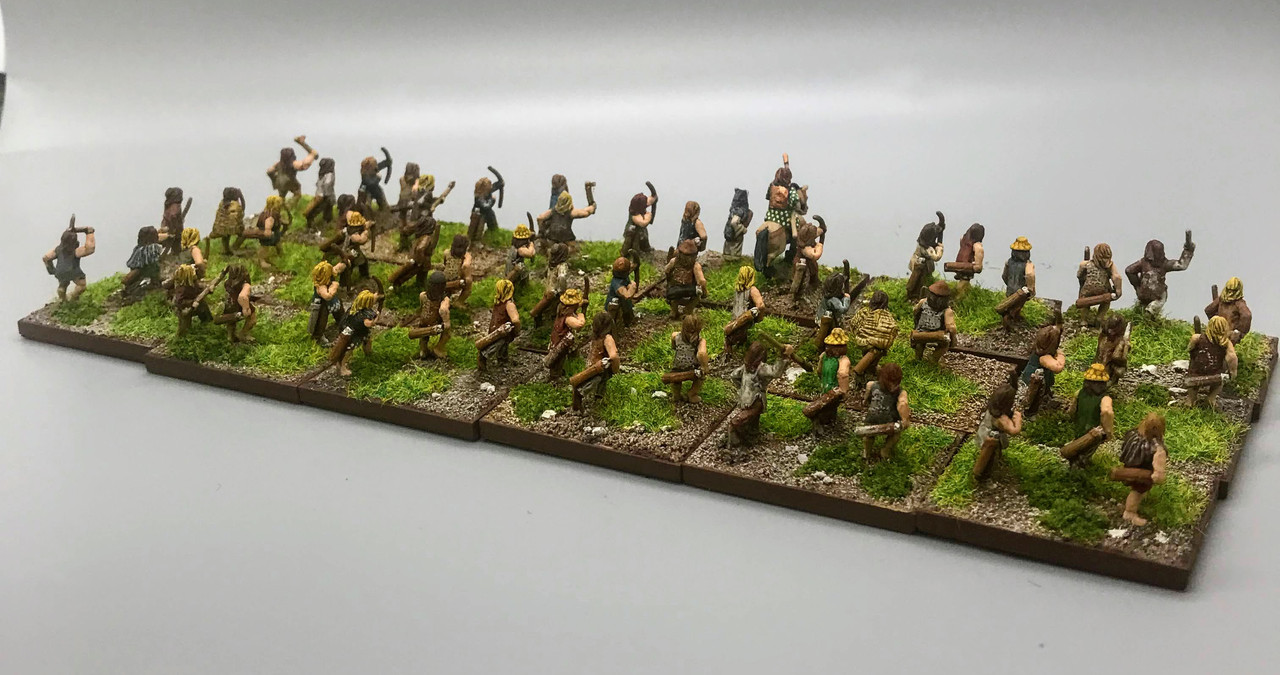
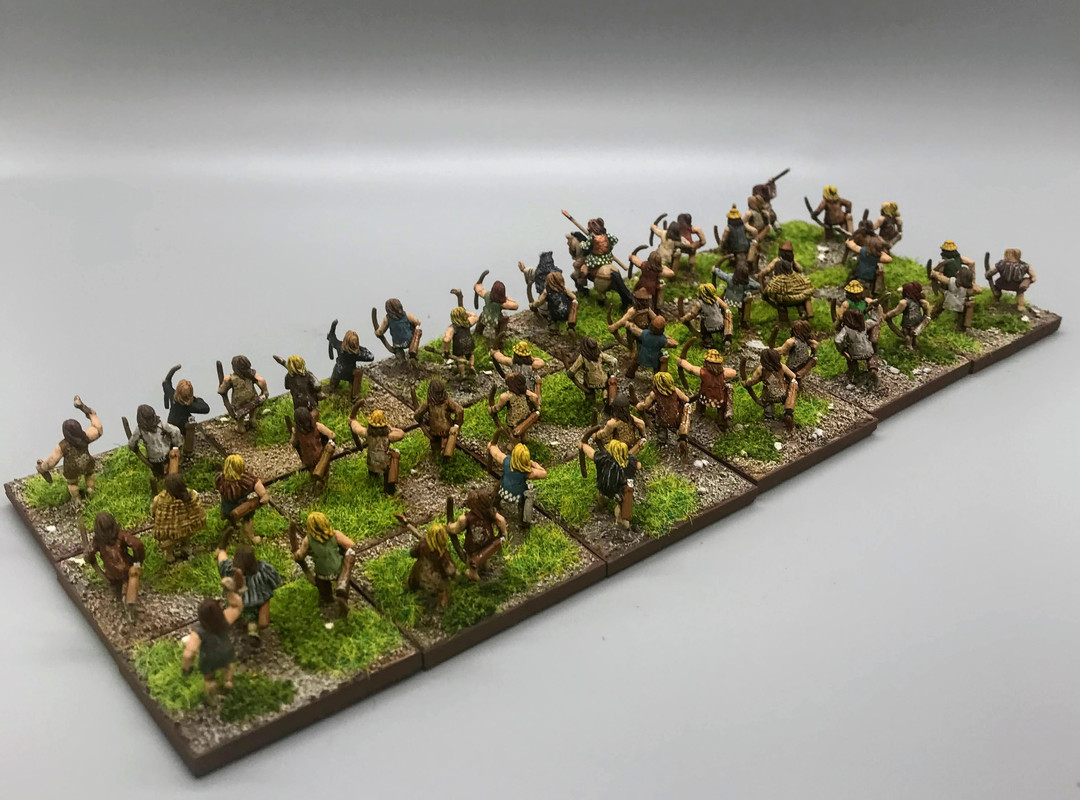
These troops have clothing and equipment drawn from modern illustrations of Bell Beaker folk, the Neolithic clothing of Otzi the “Iceman”, and from the later Unetice culture.
The hide leggings and shoes worn by most of the troops are modeled after the hide leggings found near the body of Otzi. Although Otzi died about 1,200 years before this period, I made the assumption that such practical equipment would still be in use. A few troops have straw cloaks like the one found near Otzi.
The rest of the clothing is made of animal hide or cloth. The cloth is mostly in natural colors, with a few cases of patterned edges being added to the bottom hems of tunics. Some have hats made of straw, felt, or hide.
There are a few men with spears of axes mixed into the stands. These are armed with spears, daggers, or a narrow axe like those found in Unetice culture axe hoards.
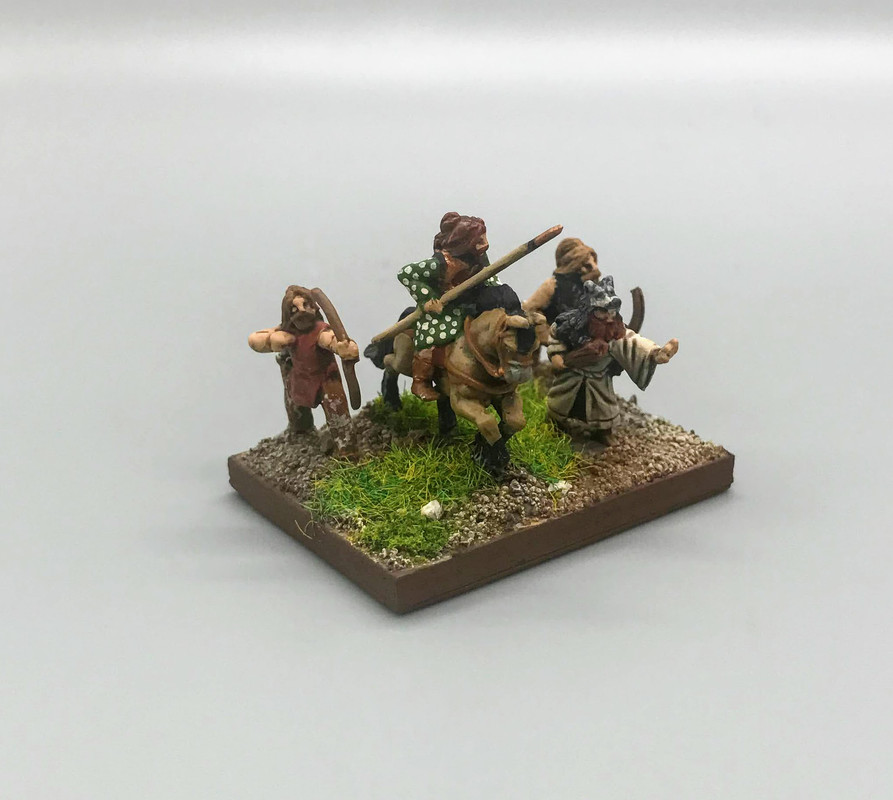

General's Bow Levy Stand
The general is mounted on a horse as a way to set the command stand apart. He is also wearing a simple bronze cuirass and greaves gained in trade with a contemporaneous culture like the Myceneans.
The Bell Beaker people of Britain are believed to have expanded Stonehenge beyond its origin as a Neolithic site, so a priest wearing a wolfskin and bearing a club is beside him.
Skirmishers

The skirmishers are stripped down to minimum clothing in order to increase their mobility. Several have simple hide or wicker shields on their back.
Notes on Figures
All the figures are by Eureka, except the priest figure who is from Splintered Light. The Bow Levy are from Eureka’s Tlingit Indian range. They were modified by adding beards, some grass or fur cloaks, a few spears, and adding or modifying hats.
The general is the top half of a Eureka Tlingit figure added to the lower half of an Old Glory Mycenean.
Scatter Terrain
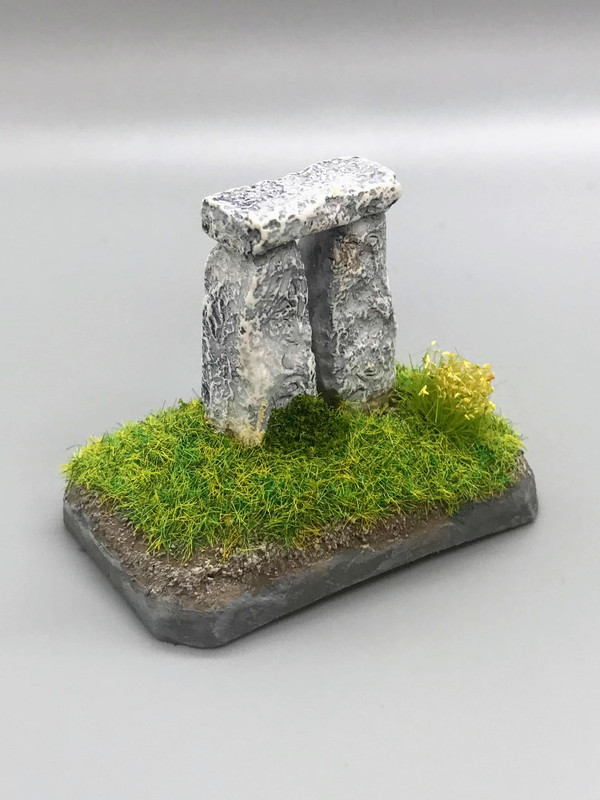
The henge is a Stonehenge model I bought during a visit to Stonehenge a few years ago, and kept just for use in a wargame. It was placed on a base and flocked, etc
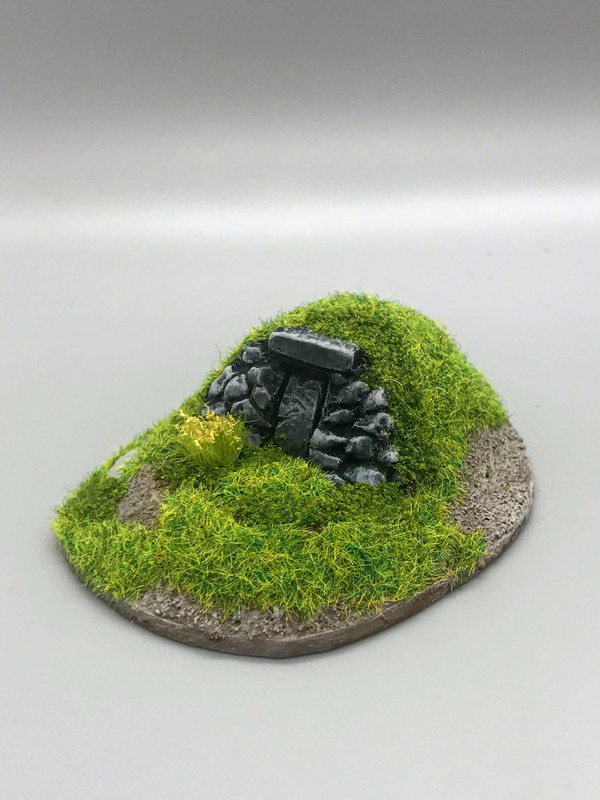
This barrow model is of unknown origin; I bought it 20+ years ago for use with a Scythian army. It was glued to a larger base before it was textured and flocked.
Reference
The Bronze Age in Europe. Mohen and Eluere, Abrams Books, 1999
2000-1200 B.C.

This army is based on the very limited knowledge we have of the military forces of the Bell Beaker culture in Britain, which lasted there until about 1800 B.C. We do know that they had bows and copper or bronze daggers for weapons based on grave finds, the best known of which is the Amesbury Archer who was discovered close to Stonehenge.
This army list has exactly two opponents listed: other Early Bronze Age North Europe and Urnfield Culture.
There is no information (that I could find) on their tactics or organization, so in Triumph! terms they are classified as Bow Levy, with options for some skirmishers and/or horde elements.
This army consists of:
18 x Bow Levy, including the general
4 x Skirmishers
For a total of 22 stands worth 48 points.
Bow Levy



These troops have clothing and equipment drawn from modern illustrations of Bell Beaker folk, the Neolithic clothing of Otzi the “Iceman”, and from the later Unetice culture.
The hide leggings and shoes worn by most of the troops are modeled after the hide leggings found near the body of Otzi. Although Otzi died about 1,200 years before this period, I made the assumption that such practical equipment would still be in use. A few troops have straw cloaks like the one found near Otzi.
The rest of the clothing is made of animal hide or cloth. The cloth is mostly in natural colors, with a few cases of patterned edges being added to the bottom hems of tunics. Some have hats made of straw, felt, or hide.
There are a few men with spears of axes mixed into the stands. These are armed with spears, daggers, or a narrow axe like those found in Unetice culture axe hoards.


General's Bow Levy Stand
The general is mounted on a horse as a way to set the command stand apart. He is also wearing a simple bronze cuirass and greaves gained in trade with a contemporaneous culture like the Myceneans.
The Bell Beaker people of Britain are believed to have expanded Stonehenge beyond its origin as a Neolithic site, so a priest wearing a wolfskin and bearing a club is beside him.
Skirmishers

The skirmishers are stripped down to minimum clothing in order to increase their mobility. Several have simple hide or wicker shields on their back.
Notes on Figures
All the figures are by Eureka, except the priest figure who is from Splintered Light. The Bow Levy are from Eureka’s Tlingit Indian range. They were modified by adding beards, some grass or fur cloaks, a few spears, and adding or modifying hats.
The general is the top half of a Eureka Tlingit figure added to the lower half of an Old Glory Mycenean.
Scatter Terrain

The henge is a Stonehenge model I bought during a visit to Stonehenge a few years ago, and kept just for use in a wargame. It was placed on a base and flocked, etc

This barrow model is of unknown origin; I bought it 20+ years ago for use with a Scythian army. It was glued to a larger base before it was textured and flocked.
Reference
The Bronze Age in Europe. Mohen and Eluere, Abrams Books, 1999